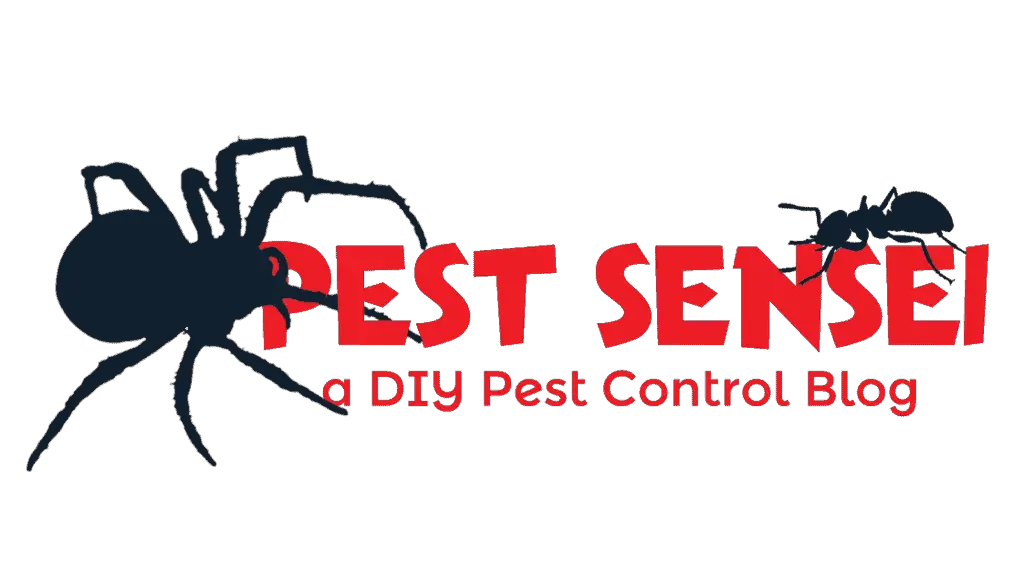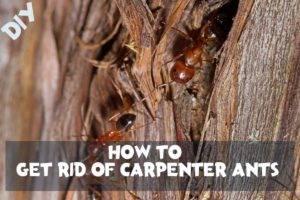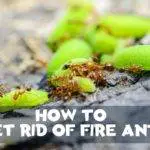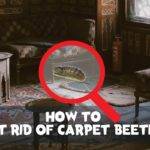Carpenter ant infestations are fairly common in the US. In this guide, I’ll teach you how to get rid of carpenter ant infestation, using safe and effective methods.
The best way to get rid of carpenter ants is baiting. Place baits around the carpenter ants. They will pick up and share the bait with nestmates, poisoning and killing the whole colony. You can also trace them back to the nest, and treat the infested wood. Fix water leaks to keep wood structures dry.
Let’s continue with more details.
Introduction to Carpenter Ants as Pests
Carpenter ants belong to the group of ants scientifically known as Camponotus spp. They are best known to destroy woods to build their nests.
Carpenter ants can be found throughout the United States, especially in the northern region. They are dark red or black in color, and measure between ¼-½” in length.
Carpenter ants usually nest outdoors in trees, timbers, and various woods. They use their strong jaws to cut wet, decayed or softened wood, and build their nest within the wood. They may also nest indoors in buildings.
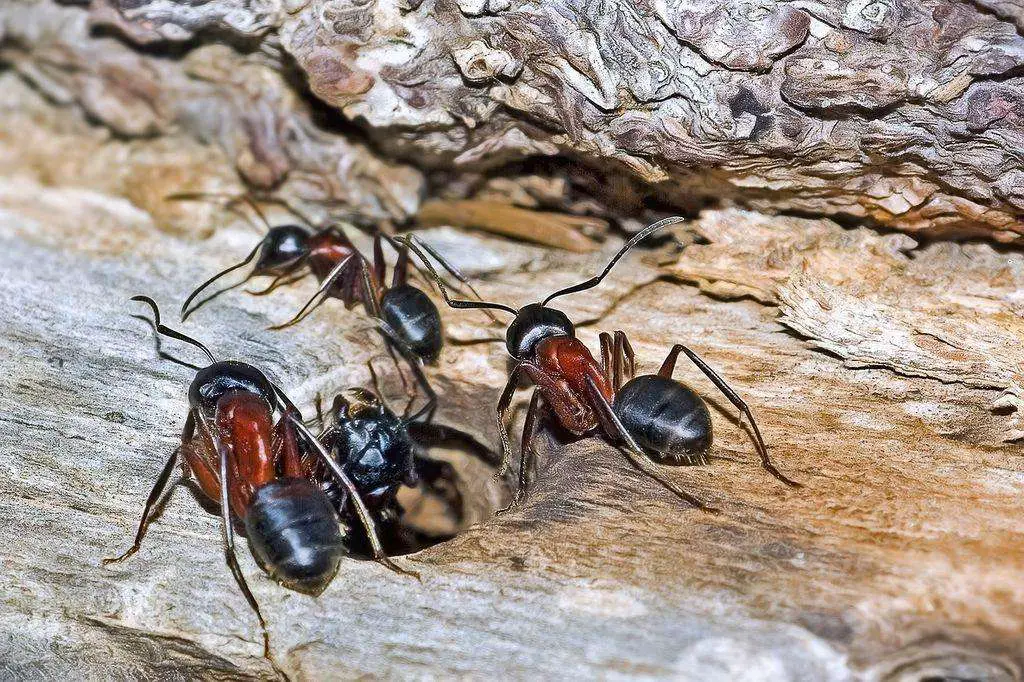
Unlike termites, they don’t feed on wood. Instead, carpenter ants feed on nectars, honeydews and other insects.
A mature carpenter ant colony may form multiple satellite nests indoors or outdoors. The satellite nests don’t have a queen, and they are controlled by the queen in the parent nest.
When disturbed, carpenter ants can bite with their powerful jaw. They don’t have a stinger, but they can excrete formic acid onto where they bite, creating a burning sensation.
How to Identify Carpenter Ant Infestation
Most of the time, homeowners notice carpenter ant infestations when they find coarse sawdust around wooden structures. This is direct evidence that the carpenter ants are nesting in the wood. If you observe carefully, you should be able to find some holes on the wood where the sawdusts are pushed out.
The sawdusts are the woods excavated by the carpenter ants, since they don’t eat wood. Unlike subterranean termite infestation, there are no soils in the infested wood. Sometimes, you may hear noises coming out from the infested wood.
While carpenter ants prefer softened woods, such as decayed or wet wood, they can also attack dry and undamaged wood.
Another sign of infestation is seeing winged ants (known as alates) emerging from the wood through the round exits. Those are the reproductive units of the ants, which can be confused with termites. Refer to the table below for the differences between the alates of ants and termites. If you have termite issues, please refer to my other guide for termites here.
| Characteristics | Ants | Termites |
| Antenna | Elbowed | Straight |
| Waist | Between the thorax and abdomen, there is a slender “waist” | Thorax and abdomen have same width |
| Wings | Front wings are longer than hind wings | Front wings are as long as hind wings |
Of course, if you can identify foraging ants in your house, you can determine whether they are carpenter ants. Carpenter ants display worker dimorphism, where there are 2 distinct sizes of workers (the caste that forage for food). They have only 1 node on their waist.
The bigger workers are called the major workers, while the smaller workers are called the minor workers. Most other ant species don’t display worker dimorphism.
If you need help identifying carpenter ants, refer to Bug Guide.
How to Treat Carpenter Ants
To achieve a successful control of carpenter ants, we need to target the nest. Treating the foraging ants has little effect, because the queen ant produces hundreds, if not thousands of eggs daily to replace loss workers.
Baiting
The most effective way to kill carpenter ants is by using bait. Foraging ants carry the bait back to their nest and kill all their nest mates by sharing their food. By using bait, you don’t have to spend time searching for the nests.
Always apply the baits on the foraging trails for maximum efficacy. I don’t encourage broadcasting the bait because it is a waste, unless you are dealing with imported fire ants.
You need to be patient when baiting carpenter ants because they have a huge colony. It takes time for the ants to distribute the bait across their colony. As long as the carpenter ants are picking up the bait, you don’t have to worry.
For carpenter ants, I recommend using Maxforce Complete Granular Insect Bait. It contains slow-acting hydramethylnon to ensure all ants in the colony are poisoned before the killing effect kicks in. This is especially important, because the colony of carpenter ants can be huge, consisting of multiple satellite nests.
Maxforce Complete Granular Insect Bait contains a balanced diet. An ant colony may require different diets at different stages of colony growth. A protein-based bait doesn’t work if the colony requires a lot of sugar, and vice versa. Using this product can save you money from buying both protein- and sugar-based baits.
Never spray around the bait! Many insecticides are repellent, which makes the bait unattractive to the ants.
If you prefer to DIY your own boric acid bait, you can refer to my guide on boric acid bait. Do note that it may not be as effective in colony elimination as commercial baits.
Treat Infested Structures and Nests
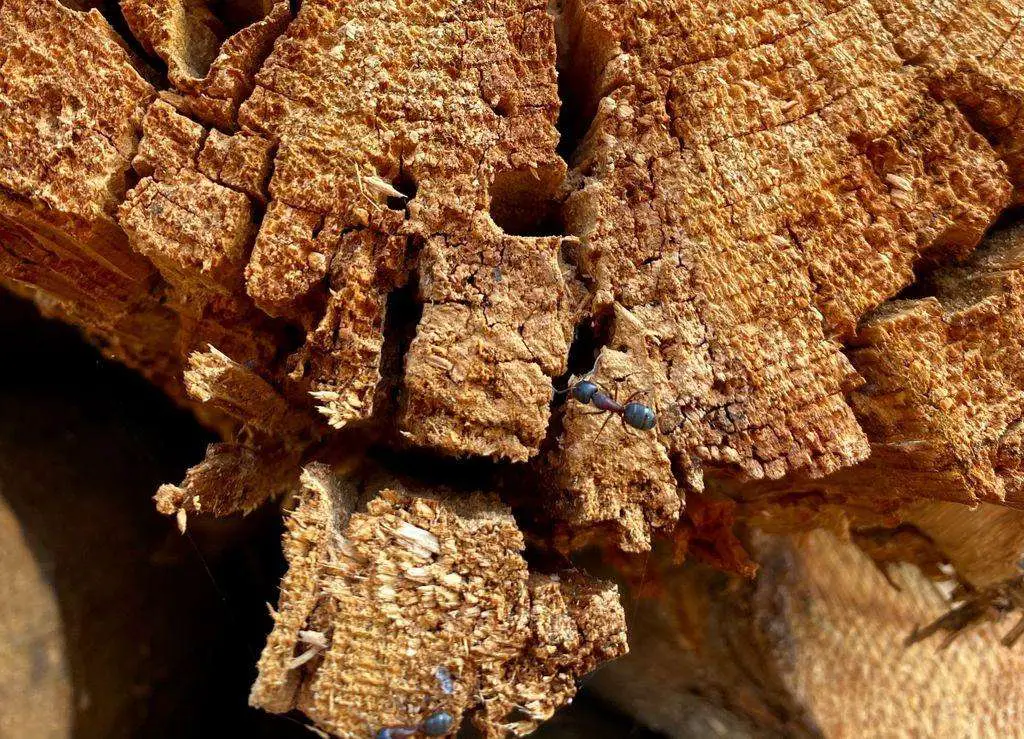
Searching for the infested structures and nests for direct treatment is often the fastest way to eliminate carpenter ant infestations. You don’t have to wait for weeks, unlike baiting.
To find the nest, simply follow the ant trail. Put some food like potato chips, biscuits, honey, or fresh dead insects on the ant trail. The carpenter ants will bring this food home, either to the main nest or the satellite nest.
If you can find the nest or infested structures, you can treat them directly. I recommend using products in foam formulation, such as Alpine Ant & Termite Foam.
Drill a few holes at 3-4” intervals until you hit the hollow wood, which is the galleries of the carpenter ants. Inject the insecticide foam into the holes, until the foam overflows from the holes. Foam can move vertically and horizontally in the wood galleries, ensuring the insecticide reaches all cavities in the wood.
If you want a natural alternative, you can puff diatomaceous earth dust (a natural, non-toxic product) into the galleries, or use EcoVenger Roach & Ants Killer. Although I’d argue foaming using Alpine Ant & Termite Foam is equally safe because it’s a spot treatment.
Puffing diatomaceous earth dust or spraying EcoVenger into the complex wood galleries can be challenging. There will be hard to reach areas bound to be missed. Hence, your first choice should be foams.
Do not spray liquid, foam, or aerosol if the nest is around electrical components, sockets, switches or wiring.
Treat Foraging Ants
Treating foraging ants is the least effective method in controlling any ant species, because it doesn’t do much damage to the ant colony. Foraging ants are only a small portion of the ant colony, and don’t forget the queen ant produces hundreds of eggs daily to replenish her lost workers.
But, because it is fast acting and kills the foraging ants directly, people with ant phobia would prefer to treat the foraging ants. In circumstances where the ants do not pick up any bait and the nest cannot be found, treating the foraging ants is often the last resort.
To treat the foraging ants, apply a 5-10”-wide band of residual spray along the ant trail. Spray the intrusion points used by the ants, such as along the window frame, door steps, and vents, that cannot be proofed. The idea is to form a line of defense against the invading ants.
If you prefer a safer and natural product, use EcoVenger. It contains a mixture of plant-based essential oils that kill the ants upon contact. The residues left on the treated surface can repel ants and other insects. As a result, the ants will either find another route to invade your house, or stop foraging at your house.
Alternatively, you can use Temprid FX (Ready-to-spray | Concentrate). Treated surfaces continue to kill ants for a few weeks. Ants contacted Temprid FX can mechanically cross contaminate their nest mates, killing a portion of the ant colony.
How to Prevent Carpenter Ants
To prevent carpenter ants, maintain good sanitation practices to reduce food sources. Fix leaking issues, store firewoods properly, trim your trees, and seal cracks and crevices.
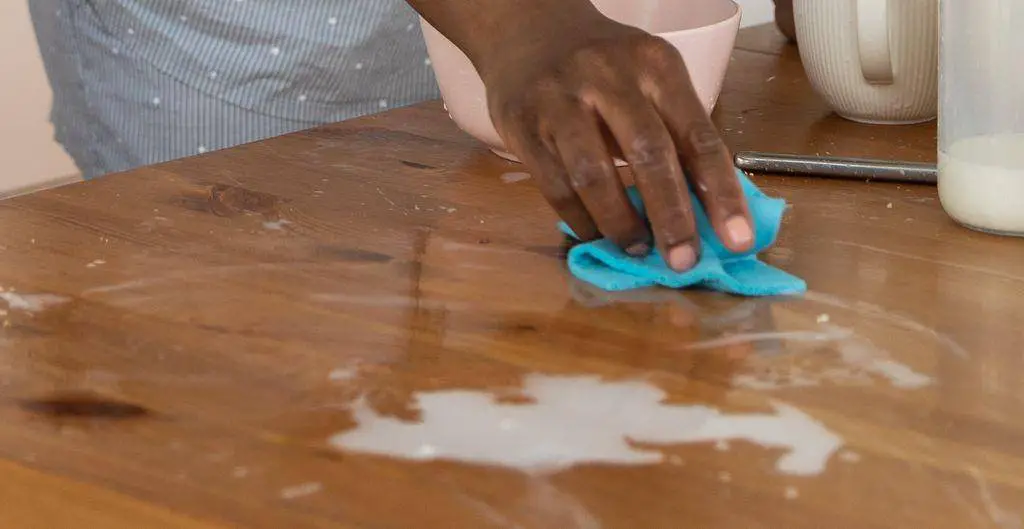
Carpenter ants invade your house for food and nest. You can remove the food sources for the ants to make your house less appealing. Here are the things that you can do:
- Clean food or drink spillage immediately.
- Clean the pet food bowl before you go to sleep.
- Regularly sweep or mop the floor to remove food debris.
- Eat only at delicate areas to limit spillage, so that you won’t miss cleaning certain places.
- Keep all food (including pet food) in airtight containers.
While there isn’t anything much that you can do in terms of removing suitable nesting materials (unless you replace all the wooden structures with metals, which is impractical), you can make the wooden structures less prone to carpenter ants.
Carpenter ants prefer to attack woods that are soft, either due to mold or water. Fix any water leaking or seepage issue as soon as possible to protect them from carpenter ants, and remove or replace any damaged or decayed wood structure, lumber piles, and rotting tree stumps.
Firewoods should be placed away from your house because carpenter ants love to nest there. Keep the firewoods in a firewoods rack, or on a non-wooden foundation so that it doesn’t touch the ground. This will keep the firewoods dry so that they don’t invite carpenter ants.
Trim the trees so that the carpenter ants can’t use the branches as the bridge to invade your house.
You should also patch all the cracks and crevices so that the carpenter ants can’t use them to invade your house.
Final Words
I hope you find this guide helpful, and thank you for reading. Do share my blog if it helps you in resolving carpenter ant infestation.
If the infestation is too heavy for you to handle, make sure you get help from a pest control service provider. You can get a non-obligatory quote from your local service providers on Networx.
